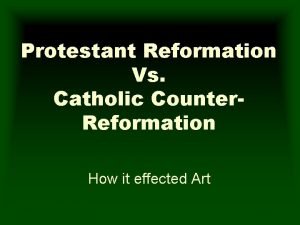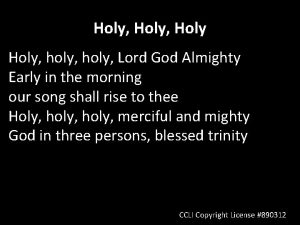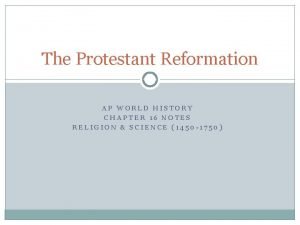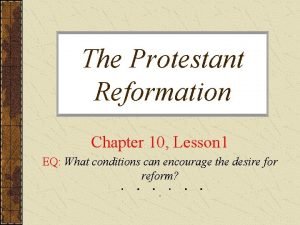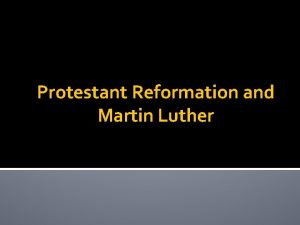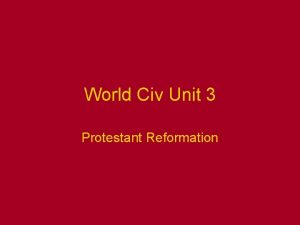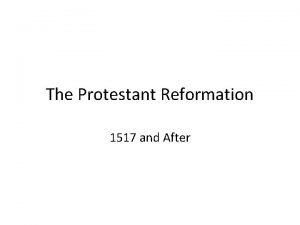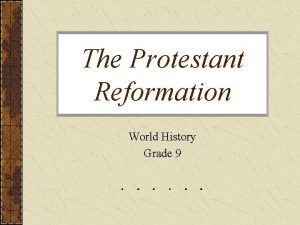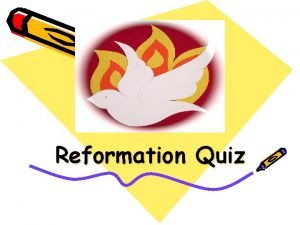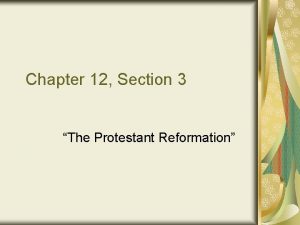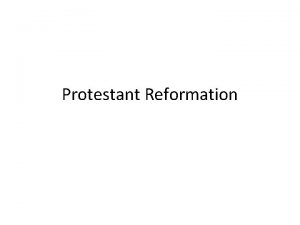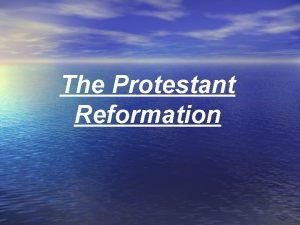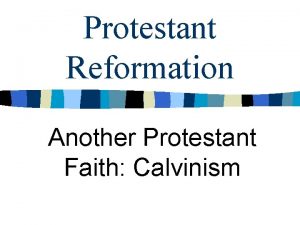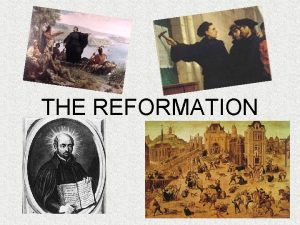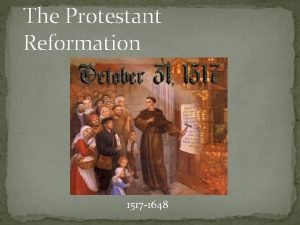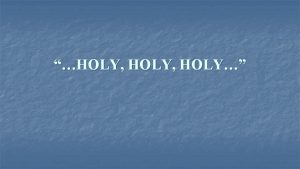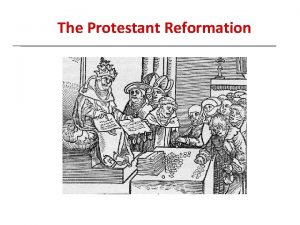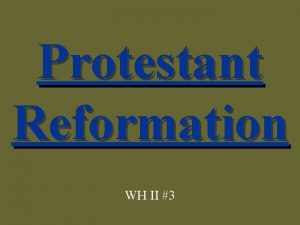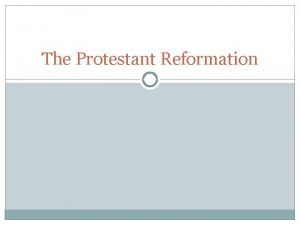The Protestant Reformation Holy Roman Empire in 1500











- Slides: 11

The Protestant Reformation

Holy Roman Empire in 1500 Located in modern day Germany Not a united nation but a patchwork of independent states Each State had its own Prince The Ruler of the Holy Roman Empire was Charles V – made so by the Pope

The Catholic Church in 1500 The Catholic Church was the most powerful institution in Europe Held the monopoly on information and education and owned a great deal of property People resented the wealth of the Church The Church and Clergy did not pay taxes The Church was corrupt!

The Catholic Church Headquarters = Rome Power of the Pope: Head of the Catholic Church Occupies God’s position on earth (above any earthly power) Infallible – incapable of error when teaching about faith and morals.

Height of Papal Corruption Pope Leo X 1513 -1521 What did he do? Depleted Papal coffers Money needed for St. Peter’s reconstruction Solution: Simony – sale of church offices Sale of indulgences – items which, when bought, took time off purgatory Pope Leo X with cardinals Giulio de' Medici and Luigi de' Rossi by Raphael

Prior to the Reformation all Christians were Roman Catholic The Reformation was an attempt to REFORM the Catholic Church Martin Luther – a catholic Monk – and others wanted to get rid of the corruption and restore people’s faith in the church, not start a separate church

Martin Luther 1483 -1546 Born in 1483 in Eisleben, Germany Became a monk in 1505 Moved to Wittenberg, Germany in 1511 Troubled by the sale of indulgences

Luther’s Issues with the Catholic Church Luther had three major problems with the Catholic Church: Indulgences Justification Authority Luther believed that the Bible was the ultimate authority - not the pope or clergy (Sola Scripture) He also came to believe in justification through faith alone not faith and good works

What was an Indulgence? A Papal pardon for sins A lessening of the time a soul would have to spend in purgatory Purgatory = a place where souls too impure to enter heaven atoned for sins committed during their lifetime According to Luther, indulgences had no basis in the Bible and the Pope had no authority to release souls from purgatory

Justification act of removing the guilt and penalty of sin while at the same time declaring a sinner righteous How is one Justified? Catholics: Christ takes away your guilt of original sin. But, we can fall out of it (i. e. sin) God's Basically, how we get back to Holiness by becoming united to Christ. Justification is a process by which we turn back to God. Its about cooperation. Luther: Christ does the work again. All you need is faith in Jesus. Once you are justified, you are always justified. Christ is like a garment.

Luther posted his 95 Theses on the door of the castle church in Wittenberg, Germany on October 31, 1517 His intent was to reform the Catholic Church, not create a separate one
 Protestant reformation vs catholic reformation
Protestant reformation vs catholic reformation Holy holy god almighty the great i am
Holy holy god almighty the great i am Holy are you lord god
Holy are you lord god Chapter 16 lesson 1 the protestant reformation
Chapter 16 lesson 1 the protestant reformation The reformation in europe lesson 1
The reformation in europe lesson 1 Protestant reformation martin luther political cartoon
Protestant reformation martin luther political cartoon Unit 3: martin luther & the protestant reformation
Unit 3: martin luther & the protestant reformation Protestant beliefs
Protestant beliefs Protestant reformation map
Protestant reformation map Crash course protestant reformation
Crash course protestant reformation The reformation quiz
The reformation quiz Unit 12 lesson 3 the protestant reformation
Unit 12 lesson 3 the protestant reformation
